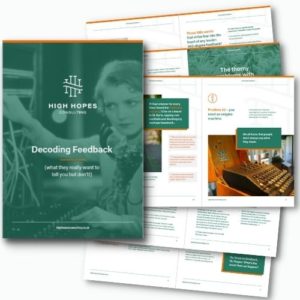It all worked fine until people started using it
It all worked fine until people started using it
Nicola Hopes

It may not surprise you to know I subscribe to the odd marketing email for fancy clothes.
I’m not always a buyer but I like looking at the cool things I’d be wearing if I had anywhere to go.
New trends feel like looking into the future – a welcome distraction from the day to day. Will we actually be wearing oversized fluorescent shirts and tie dye in future? It’s a hearty no from me but please, be my guest.
However, a marketing email arrived in my inbox earlier this month that felt like a blast from the past. And not in a good way.
It was entitled ‘How to wear cruise 2021 top trends’ complete with a picture of a woman on a beach in, yes, you’ve guessed it, a fluorescent shirt.
It couldn’t have felt more out of place as I stared out of my home office window at snow, reading about the new travel quarantine restrictions in the UK.
Who the hell is on a beach right now? Who’s planning a cruise this winter? Who’s this actually aimed at?
I get the idea of selling a dream, but this email was totally out of touch with reality. And, most importantly, out of touch with their end users – their customers.
And it reminded me of why so many change plans are going wrong right now.
Users.
What seems like a grand plan on paper can often fall to pieces when it hits the real world.
Research from August 2020 suggests user experience is as important for the success of a digital solution as the content and functionality.
According to a study by Forrester, every $1 that’s invested in user experience returns $100. This is equal to a return of 9,900%!
And a whopping 91% of customers unhappy with a digital experience don’t complain, they just disappear without leaving feedback.
Pretty stark statistics.
Users gonna use
Based on a few depressing conversations I’m having about change at the moment, I fear clients are wrestling with projects that were never designed with the end user in mind.
Or designed too hastily in a more virtual world.
- A training roll-out that relies on complicated, fully interactive modules. Nigh on impossible on video
- Trying to garner interest in a new tool without a clear ‘what’s in it for me?’ when folk are already up the eyes with the ones they contend with now
- Allowing suppliers to strong arm you into the cheapest possible screen design that’s about as intuitive as a paper-based mortgage application
Result = nobody fully engages. The change isn’t adopted. The benefits don’t materialise. We all have a good heart to heart in a lesson’s learned review and promise not to do it again.
Repeat after me.
User. Centred. Design.
Have you really thought about the people / customers / colleagues you’re designing for? Or will your project promo land like an email about cruise wear?

